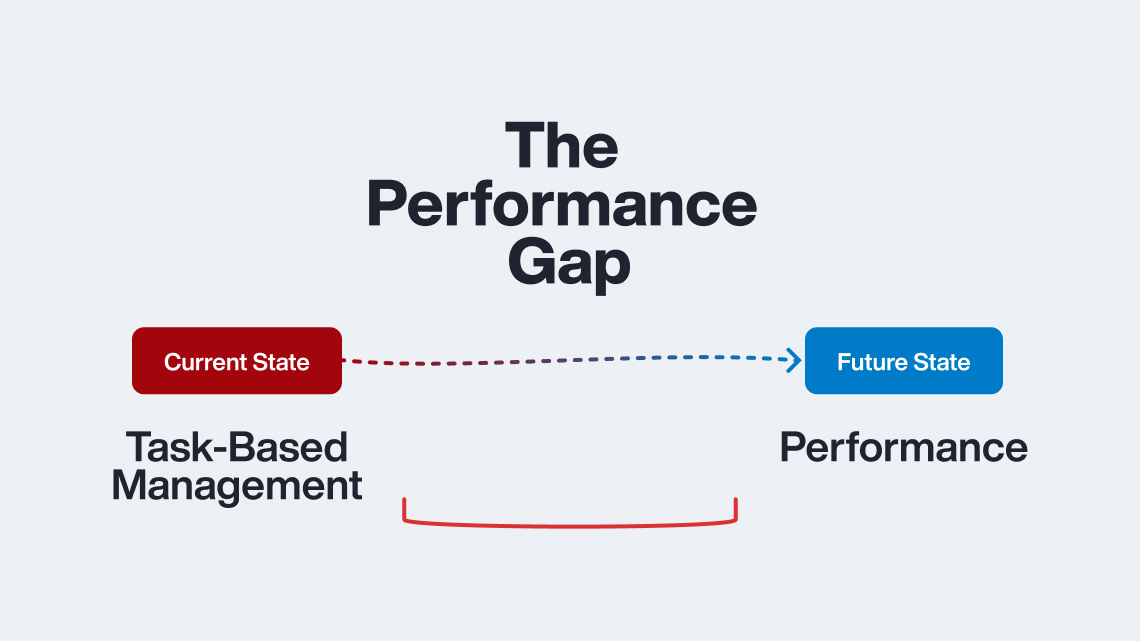Published on January 29th, 2024
By Brittany Benz
As property managers, leasing agents, and renters know, the real estate industry has been a roller-coaster ride over the past few years. All sectors of the housing market have experienced wide-reaching changes, including impacts for single-family home rentals.
While unprecedented pandemics, mortgage rates, housing shortages, shifts in work/life values, and new offerings from build-to-rent (BTR) developers have shaken up both buyers’ and renters’ landscapes, there are glimmers of hope for the near future.
As predictions roll in from experts and recent studies, it’s important for property management professionals to stay informed of — and on top of — shifting market conditions.
To remain competitive and prepare for a successful new year, here are seven current single-family home rentals and property management trends impacting the marketplace today.
Seven Current Single-Family Home Rentals and Property Management Trends
As cleverly articulated in a recent real estate financial article, “home sweet home” has become “home sweet rental.” Buyers of all ages are increasingly forgoing home ownership for reasons including affordability, flexibility, location, and amenities.
As such, it is critical to stay on top of what is most important to today’s renters to be successful when property managing single-family home rentals. Read on for seven must-know property management trends, soundbites and data points.
1.) Single-Family Home Rentals Are the New “Starter Homes”
Not only has renting lost its stigma, it’s increasingly becoming the new, albeit different, “American Dream.” The appeal of single-family home rentals has grown as the price to own a home continues to be out of reach for many Millennials, Gen Z’ers, and even Boomers.
“There was a mindset when I was growing up that my mom definitely fostered: You own your home. That’s your asset; that’s where the value is. And I just don’t know if I believe that anymore…I love renting now. It’s just way more relaxing, way less expensive, and less mess, less fuss.” – Ambre Goff, Registered Clinical Mental Health Counselor, in Forbes
As more young families choose the rental lifestyle over homeownership, it is even more essential that property managers ensure they are offering both competitive rent, features, and top-notch customer experiences.
According to a 2023 housing survey by Redfin, one in five Millennials and one in two Gen Z’ers believe they’ll never own a home. Others simply prefer to rent, with 12% stating they do not have an interest in homeownership and 7% saying they don’t want to put in the effort required for home maintenance.
However, with more interest in single-family home rentals comes more competition in a crowded space where affordability is still the primary factor.
“Prices for single-family rentals are increasing faster than rent prices for multifamily apartment buildings, showing signs of high demand. That has a lot to do with affordability as people are priced out of being able to purchase a home. They’re still looking for that starter home experience.” – Nicole Bachaud, Senior Economist at Zillow, in CNBC
2.) Rental Trends Show High Home Costs Keep Away Would-be Homebuyers
For those interested in buying a home, affordability continues to prohibit first-time or new homeownership. Though many prefer renting, Redfin found that affordability is the number one reason why young Americans don’t plan to buy a home in the near future.
Furthermore, the 2023 Zumper Annual Rent Report confirmed that homes were 52% more expensive than rentals this year, making it the highest gap ever. With delays in homeownership, the rental market is set to continue booming well into 2024.
“Over the course of the last few years, there were actually a lot of buildings in the rental sector, so that may have helped to alleviate rental prices. But they’re still at a high price.” – Jessica Lautz, Deputy Chief and Vice President of Research at National Association of Realtors, in CNBC
CNBC reported that the national rent price for a one-bedroom apartment is $1,486, a rate actually down 10% versus one year ago. Considering this trend, you should be asking yourself: Is your single-family rental home’s rent currently competitive?
3.) The Real Estate Industry Continues to Struggle With Inventory Shortages
Overall, experts agree there is still a shortage of homes when looking at both the buyers’ and renters’ markets. As Lawrence Yun, Chief Economist at the National Association of Realtors, summed it up succinctly: “There are simply not enough homes…The market can easily absorb a doubling of inventory.”
Homebuying prices will likely not significantly change until more homes are added to the total housing supply. This shortage pushes demand down to a continued crowded marketplace for single-family home rentals: In short, even though property managers may find it challenging to keep up with shifting rental trends in prospects and rent averages, demand will likely not be a prevalent issue in 2024 and beyond.
“We’ve had this ongoing conversation about the shortage of housing, which is true generally speaking, but it’s actually a shortage with more of an asterisk. We have an oversupply of multifamily and a shortage of single-family.” – Erin Sykes, Chief Economist for Nest Seekers International in NerdWallet
4.) Expect to See More Single-Family Rentals and Renter Concessions
Even though overall houses for sale are a scarcity, nationwide rental vacancy is higher, as is the propensity for incentives being offered to potential renters.
In October 2023, 968,000 permit applications were submitted by builders according to NerdWallet, specifically for constructing more single-family houses. It is safe to expect some — if not many — of those new single-family houses will become new single-family home rentals inventory.
Predictions also point to additional homeowners turning existing properties into single-family home rentals in the near future. Because many buyers took advantage of ultra-low interest rates before mortgages spiked, they may be more inclined to hold onto their homes and rent them out until they’re moving or ready to upgrade.
Add in the multifamily construction boom as another consideration and you’ve got even more to compete with. With additional homes entering the rental market, landlords and property managers will need to attract renters with affordable prices and more enticing amenities.
“30% of rentals now offer at least one concession — such as free months of rent or parking — to new tenants, compared to 24% at this time last year. Forty-three of the 50 largest markets in the U.S. are seeing more rental concessions now than last year…More rentals offering concessions may be a signal that rent growth is set to level off.” – Anushna Prakash for Zillow
5.) Built-for-Rent Properties Aren’t Going Anywhere Anytime Soon
An interesting factor in rental trends and the housing market is the “built-for-rent” (BFR) segment. Having newly entered the scene and growing in both popularity and volume, BFR homes attract people who want the benefits of residing in a single-family home while enjoying the affordability and lower maintenance burdens of renting.
BFRs are often built in the suburbs near good schools, with individual backyards and shared apartment-style community amenities. While the majority of single-family home rentals are still owned by “mom-and-pop” investors, expect to see more BFR growth in 2024 and beyond.
“Fundrise started investing in BFR communities, also known as built-to-rent (BTR), after seeing the first-floor units with entrances facing the street in an apartment property it built lease faster than the upper levels. Usually, with apartments, the higher floors lease-up, but that wasn’t the case with this project. We set off on a mission of trying to deliver what people wanted. BFR is the solution people want. They want homes with backyards and more space than you can rent.” – Ben Miller, Co-Founder and CEO of Fundrise, an online investment platform, in Yahoo Finance
6.) Renters of Single-Family Homes Have Shifting Priorities
The stigmas and interest in renting versus buying have changed, and so have the preferences and priorities of today’s renters when searching for single-family home rentals. Property management professionals and landlords can no longer assume that what was coveted even three or four years ago is what prospective renters need and want now.
Current trends reports indicate four items as some of the most important factors to renters. Keep these in mind when managing your property portfolios:
Single-Family Rental Home Amenities
With the rise of BFR communities, renters can get the “best of both worlds” when having the space of a single-family home and the amenities of a traditional multifamily complex.
Many built-for-rent communities have hundreds of single-family rental homes, along with traditional apartment amenities like pools, community rooms, walking trails, pickleball courts, and fitness centers.
These rental amenities offer a highly competitive advantage compared to an individual, standalone property.
“[For renters in] BFR communities clustered in a professionally managed community with amenities such as swimming pools, tennis courts and dog parks…with no maintenance costs, homeowners’ association fees or mortgage payments have become a more economical alternative to homeownership that still gives young families the space they need to grow.” – Ben Miller, Co-Founder and CEO of Fundrise, an online investment platform, in Yahoo Finance
“Though Zillow expects some improvement in home-buying affordability in 2024…demand — and prices — for single-family rentals will continue to increase next year as families look for more affordable options for enjoying amenities like a private backyard or home that doesn’t share walls with neighbors.” – Zillow
Pet-Friendly Rentals
Another result of the last few years? Animal adoptions rose and pandemic puppies are now solidly residents’ best friends. According to the U.S. Humane Society, 72% of renters have pets.
Unsurprisingly, most of these pet owners are simply not willing to look at any properties that lack a pet-friendly rental policy. If you currently do not allow animals, highly consider re-evaluating your lease agreement details to open up your property to a larger pool of prospective renters.
Cleaning deposits, weight and breed clauses, and policies for a maximum allowed number of pets will help safeguard investments while ensuring funds are available to property managers should there be more-than-normal wear and tear damages at move-out.
Flexibility
Part of the appeal of renting versus owning is increased flexibility, especially among younger generations that may not yet have families. With the rise of remote work and return to travel, there may even be a growing demand for shorter lease terms for renters who are seeking adventure, variety, and new life experiences.
“A national survey of apartment renters by the real estate analytics firm RealPage found two-thirds of them preferred to rent, citing lower costs and greater flexibility when relocating. More than half of Gen Z renters said they’d rather rent than buy.” – Rachel Witkowski, in Forbes
Location, Location, Location: Return-to-Work Versus Remote Work
The increasing rise of remote work has encouraged renters into suburban and rural areas more than ever before. While remote and hybrid workers are here to stay, many employees are being called back to offices in full or partial capacities.
61% of U.S. workers must be in-office, as they currently do not have a job that can be done remotely or from home.* This means proximity to work may be a more important factor — especially in cities and suburbs — than it has been in the last few years.
Demand is increasing in urban centers for rental housing that offers easy access and proximity to downtown areas and brick-and-mortar offices.**
“That’s an indication that people are looking to move back closer to the workplace or closer to more amenities. We’re expecting the rest of the country to follow that trend throughout the next year.” – Nicole Bachaud, Senior Economist at Zillow in CNBC
41% of remote workers are on a hybrid schedule. This may translate to wanting a suburban rental and/or multi-use flex spaces for home office space.*
Although many hybrid workers would prefer to spend more time working from home than in the office, 53% say working from home hurts their ability to feel connected; this is an even more compelling reason to seek out BFR community amenities and sense of a true neighborhood.*
36% of remote workers plan to move in 2023. As such, calls for suburban rentals will likely hold strong, with new construction finally catching up to demand. While there may be a boomerang back to offices and city centers, the remote-work migration is still in motion.***
According to a 2023 Apartment List survey, “One in five remote workers who moved in 2022 specifically told us that their remote work status was a motivating factor:
“Hybrid workers may be able to consider a wider range of geographic locations — assuming that they’re willing to commute longer distances if those commutes are not daily — however, their options are still largely contingent on their job location.” – John Triplett, Rental Housing Journal
7.) Aging Renters
Even though Millennials and Gen Z’ers are starting to branch out from living with parents and roommates as the housing market slowly improves, the average age of individuals who are renting instead of homeowning is actually getting higher. Record-high interest rates are deterring younger prospects from buying — and may also be influencing Boomers to rent instead of repurchasing when downsizing.
“The typical head of household in a rental is 41 years old, up from age 40 in 2019 and age 37 in 2000. Renters are getting older. As long as affordability remains a big challenge, we will likely see renters getting older.” – Nicole Bachaud, Senior Economist at Zillow, in CNBC
This is an important consideration to keep in mind when evaluating and adjusting your property management marketing efforts.
You’ll also want to be prepared for accommodations like wheelchair ramps or in-shower safety bars that may be more frequently requested by residents. Offering self-service technology and streamlined tools and apps for submitting maintenance requests can often save your staff time, energy, and money while providing increased convenience and satisfaction for your renters.
Looking at Success in Years Ahead for Your Property Management Company
If these trends seem a bit contradictory (higher versus lower rents, higher versus lower inventory, higher versus lower demand), it’s because the real estate industry truly continues to evolve and challenge us all.
Regardless of these predictions and any additional rental trends that may arise this year, there are actionable steps you can take in order to adapt:
1.) Solve for inefficiencies across your business and leverage new artificial intelligence (AI) technologies to maximize output without cutting budgets or impacting growth. The use of AI in enhancing the home search experience will only grow in the years to come. Get a step ahead by exploring what AppFolio has to offer.
2.) Remember that current rental trends are showing renters skewing older as homeownership continues to price out would-be buyers. Consider shifting your marketing mix, messaging, and mindset beyond rentals being “just for twenty-somethings” to be sure you’re reaching a wider age range of prospects, while still taking the utmost care to follow non-discriminatory fair housing laws and practices.
3.) If you’re able to, consider expanding your property portfolio and investing in single-family rentals and built-to-rent single-family homes that are in high demand.
4.) Stay informed on shifts in residents’ needs and expectations to maintain a competitive edge, including changes in average rent rates, pet-friendly leasing options, and rental concession offers.
5.) Streamline your technology and software solutions. Make sure you have a trustworthy, modern partner that can help ensure you’re not experiencing hidden inefficiencies or wasting valuable resources.
Looking Ahead
The single-family rental (SFR) market has experienced drastic changes in the past few years, and we’re likely to continue to see more impacts on everything from rent rates to inventory and demand.
While this evolution has brought new opportunities, it has also challenged property management businesses and made it harder to both keep employees happy and retain SFR owners.
By focusing attention on building strong owner relationships and leaning on technology to deliver a better experience for your customers and team members, you can keep your property management business successful.
To learn more about how to scale your single-family rental management business, download our free growth strategies playbook below.
*Pew Research Center studies
**Data from StreetEasy, Zillow Group’s New York City real estate marketplace










Comments by Brittany Benz